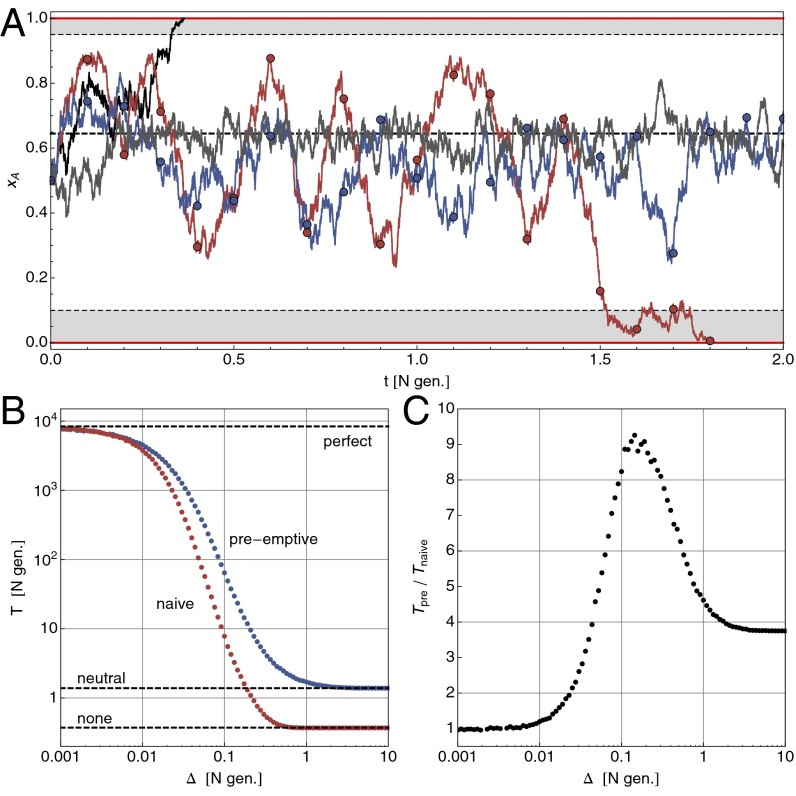Fig. 1.
Optimal control of a finite population under Wright–Fisher evolution to maintain a polymorphism. The intrinsic selection coefficient is and control shifts selection to . (A) Sample trajectories starting at : without control (, black line) the polymorphism is lost on a time scale of . With optimal control under perfect information (gray line, for , else ), it can be maintained for an average of 8,000 N generations. With finite monitoring (, measurements at circles), naive control , red line, is prone to overshooting, whereas preemptive control (blue line) tries to avoid this by switching to a neutral regime after a short time. (B) Loss of control under finite monitoring: as grows, so does the probability that the polymorphism is already lost at the next measurement. Shown is the mean survival time over 5,000 trajectories with on a logarithmic scale. (C) Under preemptive control, some of the loss of control can be regained, especially for intermediate values of .

